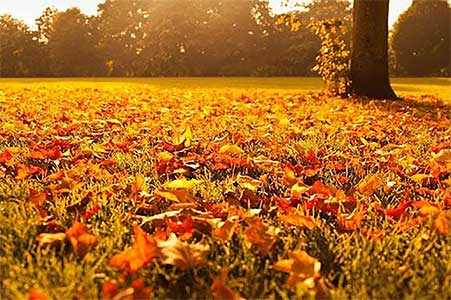
As colder weather approaches in Colorado, winterizing your landscape for the fall and winter seasons is a crucial step to help ensure your landscaping is healthy once spring rolls around again.
Preparing Your Denver Landscape for Cooler Temperatures
In Colorado especially the weather can change in an instant. We typically see snow our first snow storm in Denver on average around October 18th. However, historically Denver has seen snow as early as September 3rd(in 1961) and as late at December 10th(in 2021). So being prepared as the weather changes for THIS year, will prevent any landscape harm.
While each landscape may have special considerations for winterizing, here are some general tasks we provide to our commercial properties to protect them.
Remove Fallen Leaves
Tedious yes, but crucial. Removing fallen leaves is an important part of maintaining a healthy lawn throughout the fall and winter. Consider waiting until the leaves have dried to make the task a bit easier. Tools of choice may include a standard rake, leaf blower or, you can always mow them up! Leaves let to decompose could thin your lawn, or worse, eventually kill the lawn once warmer weather returns.
Prune Trees and Shrubs
Important for the health of your landscaping while also important for the safety of your outdoor space. The pruning process will help minimize the risk of injury, or damage that may result from broken or falling branches cause by Colorado’s notorious winter storms.
Fertilization
Plant roots will continue to grow throughout the winter; thus, a last shot of fertilizer is key to obtaining that spring lush. Use caution on your choice of fertilizer, some require watering to be effective. However, typically, only one fertilizer treatment is needed during the winter. This should be applied right after the last mow of fall.
Mulching
Adding mulch to the base of plants and trees helps to maintain an even temperature reducing the stress of harsh winter temperatures. Mulch also is an absorbent of water, which will assist in natural watering of your landscaping. Most commonly used materials include bark, chips and wood shavings.
Wrapping Shrubs
It is highly recommended to wrap plants, shrubs and small trees to keep them warm during the winter. Different materials can be utilized including, but not limited to, twine, burlap or plastic. If done correctly, your landscape will look healthy and flourish once spring begins to warm temperatures up.
Looking for Commercial Property Maintenance?
Our team specializes in large scale landscaping and yearound services for commercial properties. If you’re looking for help in maintaining your landscape contact us or give us a call 720-912-9456
Note: While ALL of these tasks can be applied to your home or private residence, and we encourage you to protect your landscape. Our services for winterizing are reserved for commercial properties ONLY.
